Results from June indicate PV systems larger than 6kW are continuing to be increasingly popular among Australia’s prospective home solar buyers.
Solar Power System Sizing
In June, nearly 83% of Australian solar shoppers using the SolarQuotes service who had a system size already in mind wanted a 6kW solar system or larger, up slightly on May. Of those, just shy of 51% wanted a 6kW system and the rest, even bigger – so it may not be long before we see 6kW+ consistently trumping 6kW in requests. As for 5kW PV systems, just 12% wanted this capacity – in June last year the proportion was 16% and in June 2018, 37%.
Time Frame For Solar Purchase
Interest in buying a system immediately picked up in June – 25% compared to 22% in May and 23% in April. Again in June, 98% of Australians requesting quotes were considering a purchase any time from immediately to within 3 months.
Price Vs Quality Selections
The proportion of solar buyers wanting a “top quality” (most expensive) system was just over 12% in June – same as in May – while 79% were after a PV package offering a balance between quality and cost, and 9% a good quality budget system.
Advanced Solar Monitoring Option
Interest in optional advanced solar monitoring remained high in June -70%; same as in May and up from 67% in April.
Microinverter Option
Microinverter interest was again 14% in June. A microinverter is a miniature inverter that operates with a single panel instead of the more common arrangement of a single string inverter being used with multiple solar panels. You can learn more about microinverters here.
Battery Ready Solar Systems
There was a significant drop in battery ready solar system interest in June – down to 8% from May’s 11% and April’s 12%. While all solar power systems can have batteries fitted, for some it’s easier than others and we ask this question on the quoting form to assist installation companies with system design.
Solar And Battery Installation
Just under 9% expressed interest in a concurrent battery installation along with their solar panels in June, compared to 7% in May. This result when considered with the “battery ready” figures above indicate Australia’s solar battery storage revolution is still to really kick into gear among new system purchasers.
Battery Sizing
For those who were considering a concurrent battery installation and had a size (capacity) in mind, 11% wanting pricing and details on 1-5kWh energy storage system, 54% for 5-10kWh and 32% for 10kWh+. More than half of all potential battery purchasers indicated they needed advice on selecting energy storage capacity.
Primary Battery Application
5% wanted a battery primarily for backup (6% May and 3% in April), while 37% were wanting a battery mainly for minimising grid use (35% in May, 36% in April) and 57% for both applications (59% in May and 61% in April).
Quarterly Power Bills
Where power bill costs were indicated, 48% stated their quarterly electricity bills were between $500 and $1,000 on average, same as May. Just under 10% were paying $1,000 or more – down on May’s 11% and April and March’s 12%.
About The auSSII
SolarQuotes matches Australians using our free quoting service with up to three carefully pre-screened solar installers, and it’s the details provided during this process we base the auSSII report on. Hundreds of thousands of Australians have used the SolarQuotes service since it launched in 2009.
SolarQuotes Sales Leads
For more than a decade, SolarQuotes has been providing quality installers with quality leads. Discover more about our sales leads service.
Republishing auSSII Report Content
Republishing all or part of any auSSII report is welcome, but attribution to SolarQuotes and the page from which the content was sourced is required.

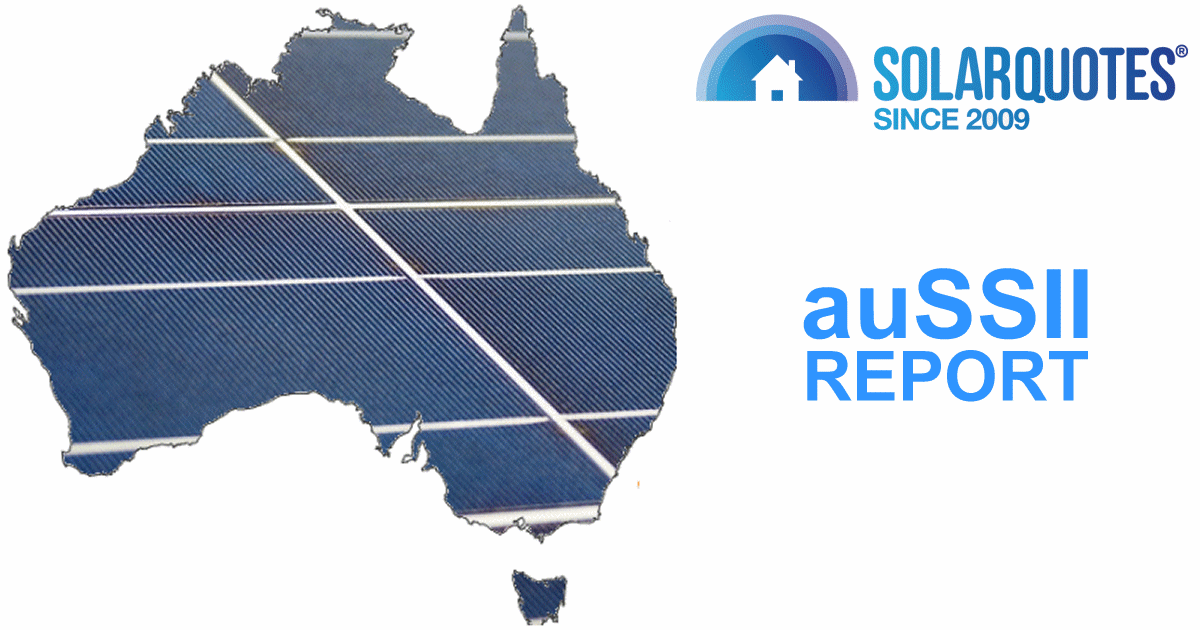
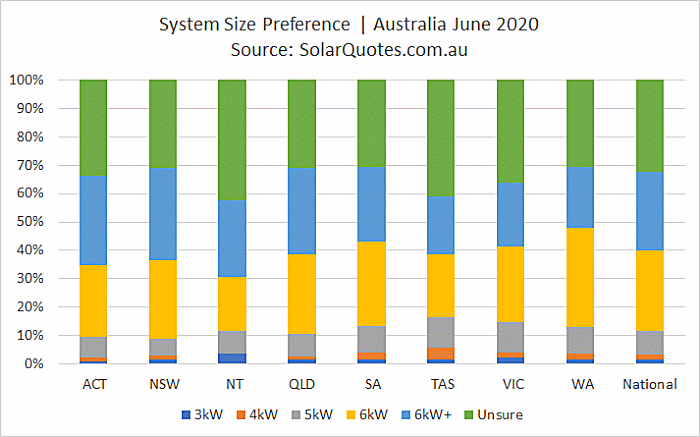
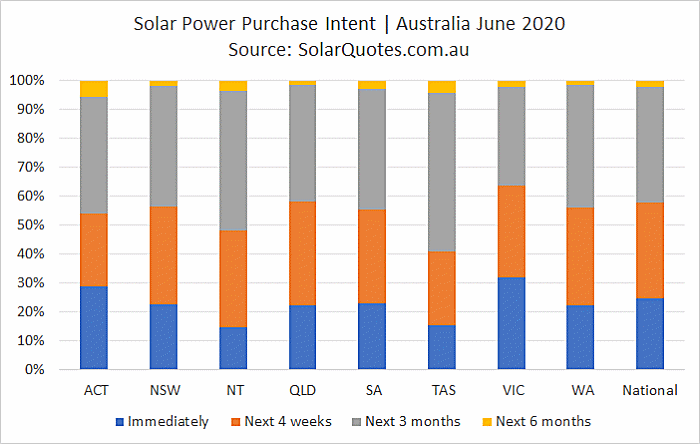
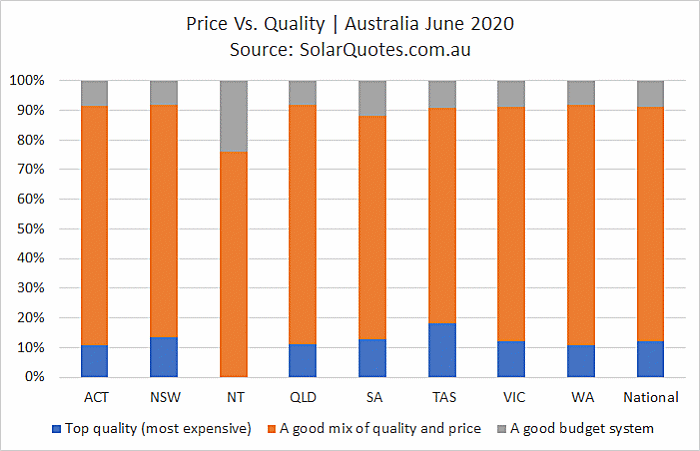
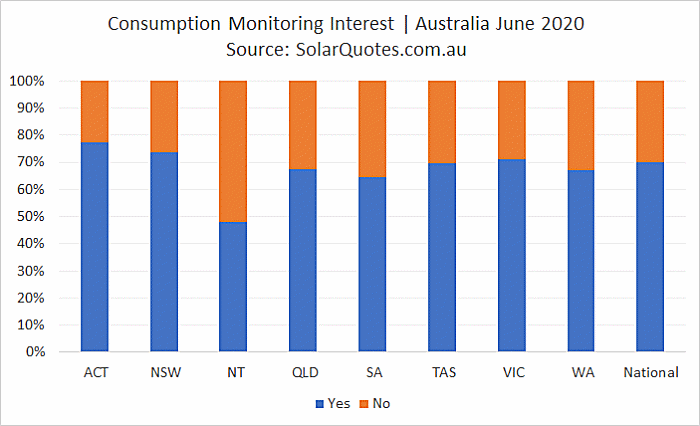
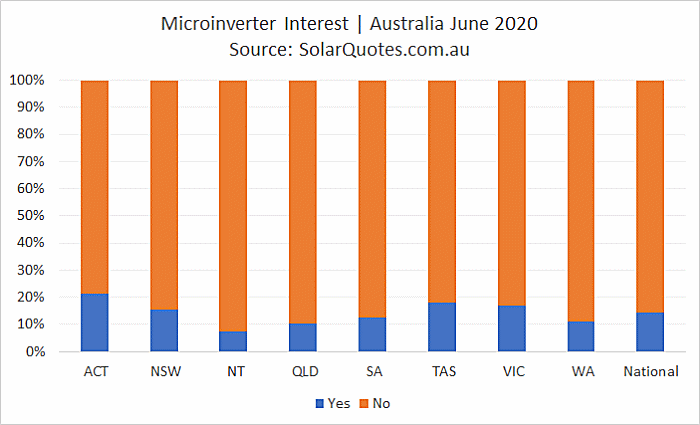
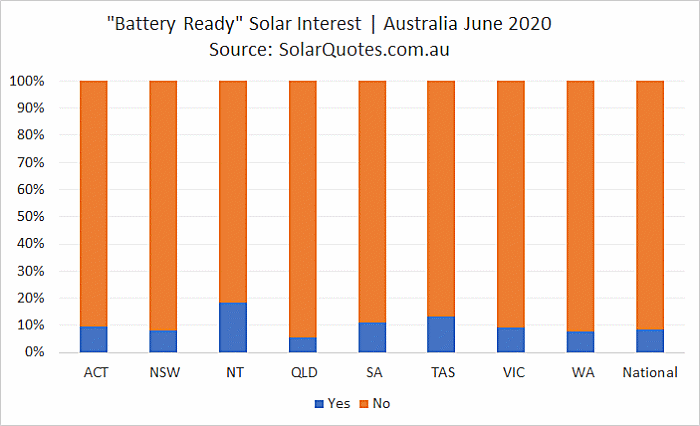
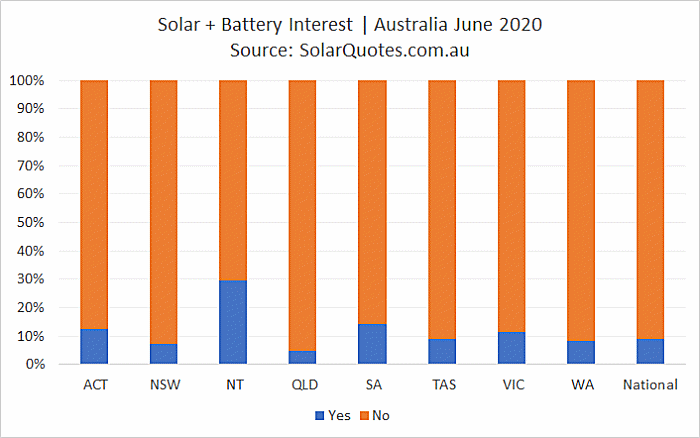
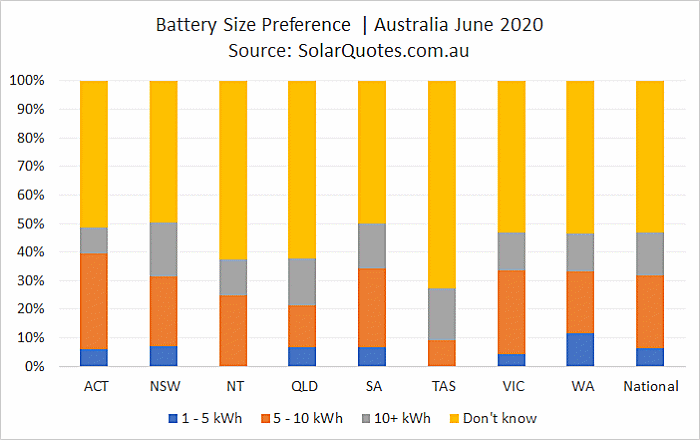
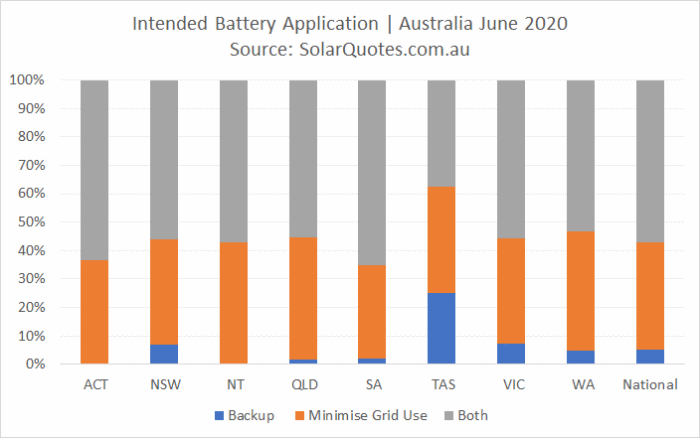
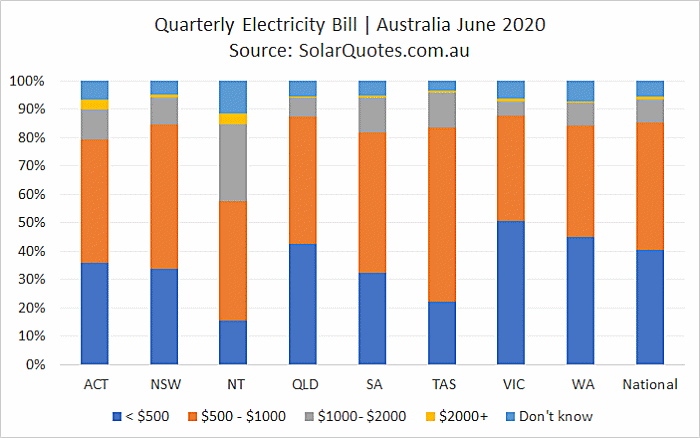
 RSS - Posts
RSS - Posts



Very interesting to note the interest in larger systems, from that i conclude the cowboys may be causing this increase as people think it will increase their savings or totally remove their electricity costs altogether. I installed a 5.7kw hybrid system 2.5 years ago that was reasonably good quality and use 30% and export 75%. When you enter an agreement with a provider you have to choose between a good discount or good feed-in tariff not both. My system will pay for itself after 4.5-5 years and I look forward to the time I am able to install a battery when it makes economic sense to do so. Thanks for all the different info you provide, I enjoy reading your posts and like to keep abreast of what is happening with both solar and water services.
Hi Graham,
I have being trying for years to get an affordable system for a complicated property. I’m a ‘cowgirl’ and as you dont know my reason for choosing a larger system I will let you know so you may advise me better. I have a large old house, half is not used and there are ususally three of us in the house. Our bills sit at an atrocious $1500 and sometimes higher quarterly bills. The house has an old stone part that is being converted into a two bedroom ‘unit’. The back of the house has 5 bedrooms, a large 44 sq mt common area. We are in a great tourist area and consider it we can provide amenities ie heating and air con, which by the way we have not had for over 10 years (I cope OK..others do complain) that require energy, our costs will be diminished greatly. Should I get two small units? kind regards whoo harrr what a technological ride!!!!!
With banks paying 0.1% (yes, one tenth of one percent) interest on deposits, I figured that a large solar system would be just as safe an investment and around a hundred times more worthwhile. And so it is turning out to be.
With a usage price of 24c/kWh and feed-in tariff of 20 c/kWh my 10kW system is saving me around $7/day during June and July, not usually solar friendly months. Multiply that by 300 (who needs 365 days?) and that’s a saving of around $2,000 for the year, a return of about 20% on the system’s $10,500 cost. So, as far as I can see, the bigger the system the better, even when the honeymoon 24 c/kWh period of two years is over. Cheers…
I say with every rebate prices just go up for sulpply and install its a con
We have the lowest cost distributed solar in the world and that’s after accounting for taxes and subsidy, so we’re doing something right.